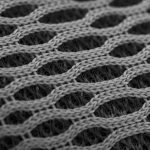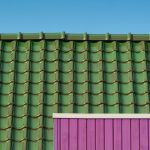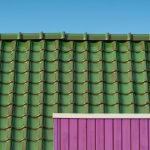Are you wondering if you can use leather waterproof on fabric? Look no further! This article has all the answers you need.
We will dive into the world of leather waterproofing and explore different types of fabric to determine if they are compatible.
You’ll also find a step-by-step guide on how to apply leather waterproof on fabric, along with precautions and maintenance tips.
So, if you want to keep your fabric dry and protected, let’s get started!
Table of Contents
Understanding Leather Waterproofing
You can use leather waterproof on fabric, but it may not be as effective as using a waterproofing product specifically designed for fabric. While leather waterproofing products are primarily designed for treating leather, some people still choose to use them on fabric materials. However, it’s important to note that leather waterproofing products are formulated to work specifically with the unique properties of leather, such as its natural oils and texture.
When it comes to fabric, there are alternative waterproofing products available that are specifically designed to provide better results. These products are formulated to penetrate the fabric fibers, creating a protective barrier that repels water and prevents it from seeping through. They are also designed to be breathable, allowing air to pass through while keeping water out.
One of the benefits of using a fabric-specific waterproofing product is that it is likely to provide better and longer-lasting results. These products are often tested and proven to be effective in various weather conditions, ensuring that your fabric stays dry and protected. Additionally, fabric waterproofing products are typically gentle on fabrics and do not cause any discoloration or damage.
Exploring Different Types of Fabric
When it comes to fabric waterproofing options, there are several choices available to you. It’s important to consider the durability of leather versus fabric, as this will play a role in your decision-making process.
Additionally, knowing which fabrics are best for waterproofing can help ensure that you make the right choice for your needs.
Fabric Waterproofing Options
There are various options for waterproofing fabric, including using a leather waterproofing spray. While leather waterproofing sprays are primarily designed for use on leather products, they can also be used on certain types of fabric. The spray forms a protective barrier that repels water, preventing it from seeping into the fabric.
This can be especially beneficial for outdoor gear, such as jackets and backpacks, as well as for upholstery and other fabric items that may be exposed to moisture. Using a leather waterproofing spray on fabric is a convenient and cost-effective way to enhance the water resistance of your items.
However, it’s important to note that not all fabrics are suitable for this type of treatment, so it’s always best to check the manufacturer’s instructions before proceeding.
Leather Vs. Fabric Durability
To determine the durability of leather versus fabric, consider factors such as wear and tear, longevity, and resistance to damage.
Leather is known for its durability, as it can withstand a significant amount of wear and tear without showing signs of damage. It has a natural strength that allows it to last for many years, making it a popular choice for furniture and accessories.
Fabric, on the other hand, may not be as durable as leather, especially when it comes to withstanding heavy use. However, fabric can be more breathable than leather, allowing for better air circulation and comfort. Additionally, fabric is generally easier to maintain and clean compared to leather, as it can be machine washed or spot cleaned.
Ultimately, the decision between leather and fabric comes down to personal preference and the specific needs of the item in question.
Best Fabrics for Waterproofing
For optimal waterproofing, consider using materials like vinyl or synthetic fibers. These fabrics are designed to repel moisture and keep you dry. They offer a range of benefits for outdoor activities, ensuring that you stay comfortable and protected in wet conditions.
Here are three reasons why these fabrics are the best choice for waterproofing:
-
Water repellency: Vinyl and synthetic fibers have a natural resistance to water. This prevents it from seeping through and keeps you dry even in heavy rain.
-
Breathability: These fabrics are designed to allow moisture to escape. This prevents you from feeling clammy or sweaty during physical activities.
-
Durability: Vinyl and synthetic fibers are known for their strength and resilience. This makes them ideal for withstanding the rigors of outdoor activities.
Testing Compatibility: Leather Waterproof on Fabric
You might want to consider testing if leather waterproof is compatible with fabric before applying it. Testing the compatibility between leather waterproof and fabric is crucial to ensure the desired results and avoid any potential damage.
There are a few testing techniques you can use to determine whether leather waterproofing is suitable for your fabric.
One effective method is to apply a small amount of leather waterproofing product on an inconspicuous area of the fabric. Gently rub it in and let it dry completely. Observe the fabric for any adverse reactions such as discoloration, stiffness, or changes in texture. If there are no negative effects, you can proceed with waterproofing the entire fabric.
The benefits of leather waterproofing on fabric are numerous. Firstly, it provides a protective barrier against moisture, preventing water from seeping into the fabric fibers. This is especially beneficial for outdoor fabrics, such as patio furniture cushions or outdoor clothing, as it helps to keep you dry during rainy weather.
Additionally, leather waterproofing can enhance the durability of the fabric by increasing its resistance to stains, dirt, and wear. This extends the lifespan of the fabric, saving you money in the long run.
Step-by-Step Guide to Applying Leather Waterproof on Fabric
Now that you’ve tested the compatibility of leather waterproof on fabric and determined it’s safe to use, it’s time to learn the step-by-step process of applying it.
Follow these application tips to ensure a successful waterproofing process for your fabric items.
First, clean the fabric thoroughly to remove any dirt or stains. This will help the waterproofing product adhere better to the fabric.
Next, apply the leather waterproof evenly onto the fabric using a clean cloth or sponge. Make sure to cover the entire surface and pay extra attention to seams and edges.
Allow the product to dry completely before testing its effectiveness. This usually takes around 24 hours, but check the instructions on the product for specific drying times.
Once dry, test the waterproofing by pouring a small amount of water onto the fabric. If the water beads up and rolls off without seeping into the fabric, you’ve successfully waterproofed it.
Common mistakes to avoid include applying too much product, which can lead to a sticky residue, or not allowing enough drying time. Remember to follow the instructions on the product for best results.
Precautions and Considerations for Using Leather Waterproof on Fabric
When considering the use of leather waterproof on fabric, it is important to understand the compatibility between the two materials. Certain fabrics may not be suitable for this treatment and could potentially be damaged.
Additionally, knowing the proper application techniques will ensure an effective and long-lasting result.
Lastly, it is crucial to understand the long-term effectiveness of leather waterproof on fabric and whether it will provide the desired level of protection over time.
Compatibility With Fabrics
Using leather waterproof on fabric may not be compatible due to the different materials and textures. Leather waterproof is specifically designed for use on leather, which is a natural material with unique properties.
Fabrics, on the other hand, can be made from a variety of materials such as cotton, polyester, nylon, and more. These fabric types have different characteristics and behaviors when exposed to moisture.
Leather waterproofing techniques, such as wax or oil-based products, may not be suitable for fabrics as they can alter the appearance, texture, and breathability of the fabric. Additionally, the waterproofing properties of leather waterproof may not be as effective on fabrics, leading to limited protection against water damage.
Therefore, it is advisable to use waterproofing products specifically formulated for fabrics to ensure compatibility and optimal performance.
Application Techniques
To ensure proper application techniques, it’s important to follow the instructions provided on the fabric waterproofing product. This will help you achieve the best results and avoid common mistakes.
Here are some key tips to keep in mind when applying fabric waterproofing:
-
Clean the fabric: Before applying the waterproofing product, make sure to thoroughly clean the fabric. This will remove any dirt, stains, or residue that could interfere with the effectiveness of the waterproofing.
-
Test a small area: Before applying the waterproofing product to the entire fabric, it’s a good idea to test it on a small, inconspicuous area. This will ensure that the product doesn’t cause any unwanted discoloration or damage.
-
Apply evenly: When applying the waterproofing product, make sure to apply it evenly across the fabric. This will ensure that the entire surface is protected and prevent any areas from being left vulnerable to moisture.
Long-Term Effectiveness
For long-lasting protection, it’s important to periodically reapply the fabric waterproofing product. Leather waterproofing products may seem convenient, but using them on fabric can have potential risks. Leather waterproofing products are designed for leather and may not be as effective on fabric. Fabrics require different waterproofing methods for optimal results.
Spray-on waterproofers or wash-in waterproofers are specifically formulated for fabrics and provide better protection against water damage. These methods are more effective in sealing the fabric and preventing water penetration.
Using leather waterproofing on fabric may result in uneven coverage, reduced effectiveness, or even damage to the fabric. To ensure the best results, it is recommended to use fabric-specific waterproofing products for fabric items.
Maintaining Waterproofed Fabric: Dos and Don’ts
Make sure you follow the dos and don’ts when maintaining waterproofed fabric. Proper care and maintenance can significantly extend the life and effectiveness of your waterproofed fabric. Here are some tips to help you keep your fabric in top condition:
Dos:
- Clean your waterproofed fabric regularly to remove dirt and debris that can compromise its waterproofing abilities.
- Follow the manufacturer’s instructions for cleaning and care. Different fabrics may have specific requirements.
- Store your waterproofed fabric in a cool, dry place when not in use. Avoid direct sunlight, as it can weaken the fabric and fade the color.
- Reapply waterproofing treatments as needed to maintain the fabric’s water-repellent properties.
Don’ts:
- Do not use bleach or harsh chemicals when cleaning your waterproofed fabric. This can damage the fabric and reduce its waterproofing capabilities.
- Avoid using a washing machine or dryer unless specifically recommended by the manufacturer. These machines can cause wear and tear on the fabric.
- Do not iron or apply heat to the fabric, as this can damage the waterproof coating.
By following these dos and don’ts, you can ensure that your waterproofed fabric remains effective and durable for years to come.
| Dos | Don’ts |
|---|---|
| Clean regularly | Use bleach or harsh chemicals |
| Follow manufacturer’s instructions | Use washing machine or dryer |
| Store in a cool, dry place | Iron or apply heat |
| Reapply waterproofing treatments |
Alternatives to Leather Waterproof for Fabric
Looking for different options? Consider alternatives to leather when choosing a waterproof option for your fabric. There are several eco-friendly alternatives to leather waterproof finishes that can be applied to synthetic fabrics. These options not only provide protection against moisture but also minimize the environmental impact.
One popular alternative is wax-based waterproofing. Wax can be applied to fabric to create a barrier against water. It is a natural and sustainable option that is both effective and long-lasting.
Another option is silicone-based waterproofing sprays. These sprays create a hydrophobic layer on the fabric, repelling water and keeping it dry. They are easy to apply and provide excellent waterproofing properties.
For those looking for a plant-based alternative, there are waterproofing options made from natural oils and waxes. These products are biodegradable and do not contain harmful chemicals. They offer effective waterproofing while being gentle on the environment.
When considering waterproofing options for synthetic fabrics, it is important to prioritize sustainability and eco-friendliness. By choosing alternatives to leather waterproof, you can protect your fabric from moisture while minimizing your environmental impact.
Conclusion
In conclusion, while leather waterproof is specifically designed for leather, it is possible to use it on certain types of fabric. However, it is important to test compatibility beforehand to ensure the desired results.
By following a step-by-step guide and considering precautions, you can successfully apply leather waterproof on fabric. It is also crucial to maintain the waterproofed fabric properly.
Alternatively, there are other options available specifically designed for waterproofing fabric. With proper research and care, you can protect your fabric from water damage effectively.
- How Does Ring Spun Cotton Affect Garment Fit and Shape Retention? - August 13, 2024
- What Are the Challenges in Producing Ring Spun Cotton? - August 13, 2024
- Is Ring Spun Cotton Suitable for Plus-Size Clothing? - August 13, 2024




